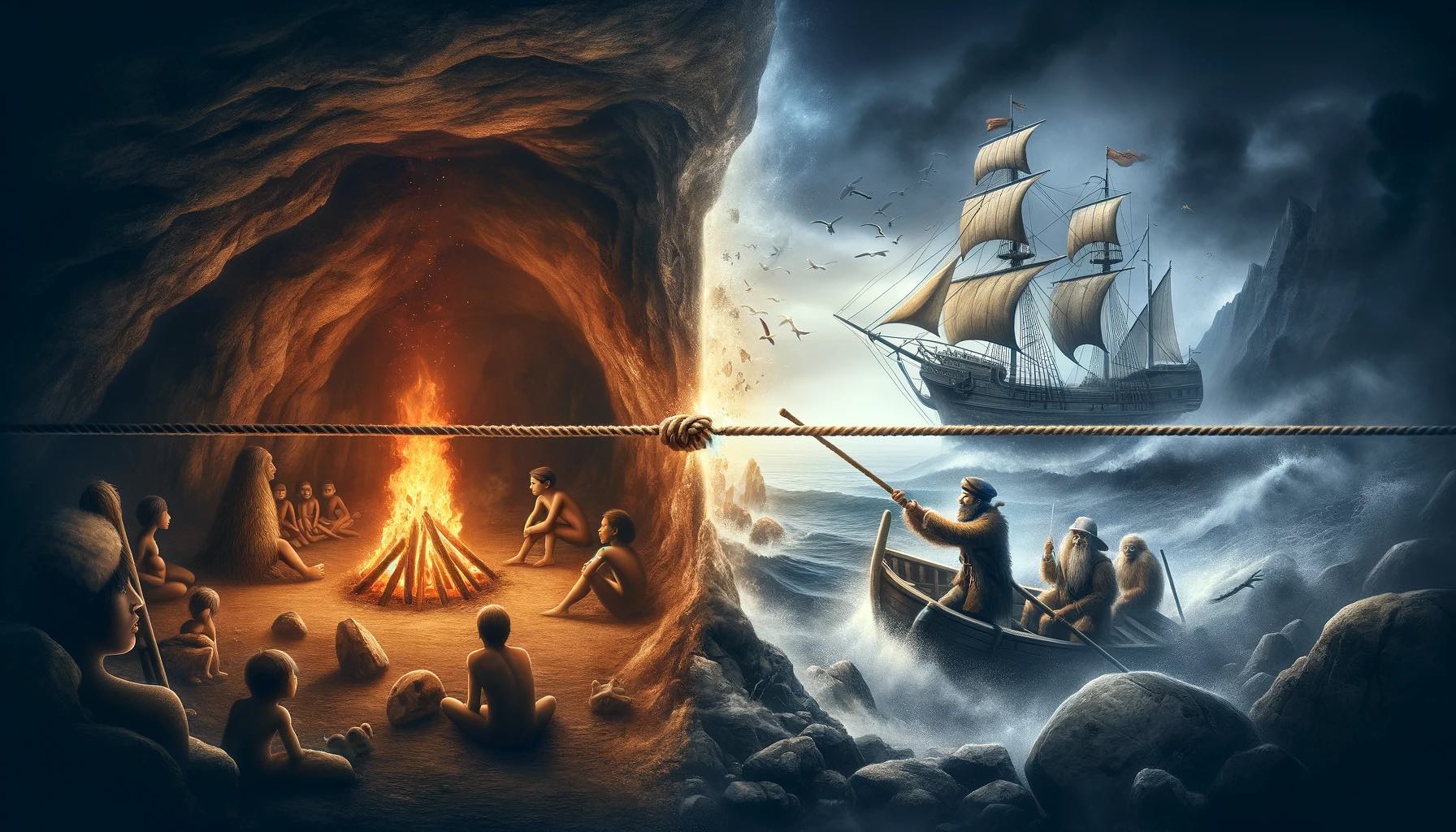“Morning walk or snooze in bed?”
“Attend a networking event to build new connections or focus on completing a high-priority project?”
“Pursue a new role for broadened experience or deepen expertise in my current role?”
Ever felt torn between seemingly competing choices?
A. The Primordial Tension
There’s a primordial tension that determines the way we act, think and feel that is often overlooked.
Such tension seems to be a hangover from our distant evolutionary past.
Our ancestors balanced safety and exploration needs, and those who became complacent or remained in one place for too long were more likely to starve or be killed by wild beasts, without leaving offspring.
A dopamine-driven navigation mechanism in our ancestors’ brains reinforced actions seen as leading to progress towards desired goals, primarily related to finding food, sex and shelter. For example, seeing a fruit-bearing tree would trigger gradual releases of dopamine – the brain’s pleasure-inducing chemical linked to goal-chasing – along the way to the tree, leading to satisfaction upon reaching it and eating from it. Upon reaching the valued goal, satisfaction and satiety are achieved, causing the dopamine levels to drop below the base level and gradually reset. For our ancestors, exploration was a continual process, and this same dopamine mechanism, rewarding progress on the basis of anticipation of pleasure, applied whether the search was for new food sources, shelter, sex or protection from danger.[i]
The said interplay between safety and exploration maps well and also explains the ever-present tension between safety and risk, stability and change, discipline and vision, management and leadership, compliance and innovation.
B. Stability as Virtue and Vice
In the spirit of Aristotle’s teachings, any virtue taken to the extreme becomes a vice.
On the one hand, organisations are advised to ensure that proper systems, robust procedures and firm management practices are in place to ensure optimum stability and functioning. For companies and individuals alike, the field of management maps onto the domain of the ‘known’: what becomes mastered ultimately transforms into what is known. An over-reliance on the ‘known’ and on how “things are done around here” however will eventually pose the risk of becoming too rigid and ossified, which are suboptimal modes of adapting to an ever-evolving and shifting environment and world.
Just think of the case of Kodak, the camera behemoth that crumbled under the weight of its rigidity and inability to adapt to a rapidly emerging digital world. Kodak filed for bankruptcy in 2012.
“Adapt or die” as the proverbial adage provides.
C. Change as Virtue and Vice
Change pushed to an extreme can also become catastrophic.
Organisations and leaders alike are advised to tap onto their primordial exploratory drives so as to bring in novel ideas, new information and updated modes of doing things and innovative techniques so as to ensure that there is an optimal replenishing of systems and proper adaptation for survival and thriving. An over-indulgence in the ‘unknown’ and in the direction of change by obsessing on “how things are done elsewhere” can erode focus, impede momentum and lead to disintegration due to extreme fluidity, ultimately succumbing to the destructive forces of entropy.
Just think of the more recent case of the OceanGate Titanic disaster, involving an inventor who disregarded standard safety requirements in the submersible industry in favour of a low-cost experimental innovation through the use of a carbon-fibre hull that led to a tragic underwater implosion and the touristic sub-ocean exhibition disaster.
D. The Sweet Spot
Organisations that survive and thrive are those whose leaders manage to effectively straddle the fundamental tension between safety and exploration:
They maintain stable systems, invest in robust processes and orient themselves towards a more disciplined approach to innovation to ensure that a necessary element of stability supports the organisation while being adaptive and open to new ideas, technologies and opportunities which are conducive to the continuous replenishment of organisational order and the timely upgrade of all systems.
What about you?
Have you witnessed this tension between the need for safety and stability and the drive for exploration and growth?
As always I look forward to your thoughts below!
Philippos
PS: The above text includes an extract from my latest book “The MARVEL of Happiness: Principles, Stories and Lessons for Living Fully”. All rights reserved.
[i] For a useful and practical analysis of how our dopamine system works, check out Ryan A. Bush’s Designing the Mind: The Principles of Psychitecture and Simon Sinek’s Leaders Eat Last: Why Some Teams Pull Together and Others Don’t.


